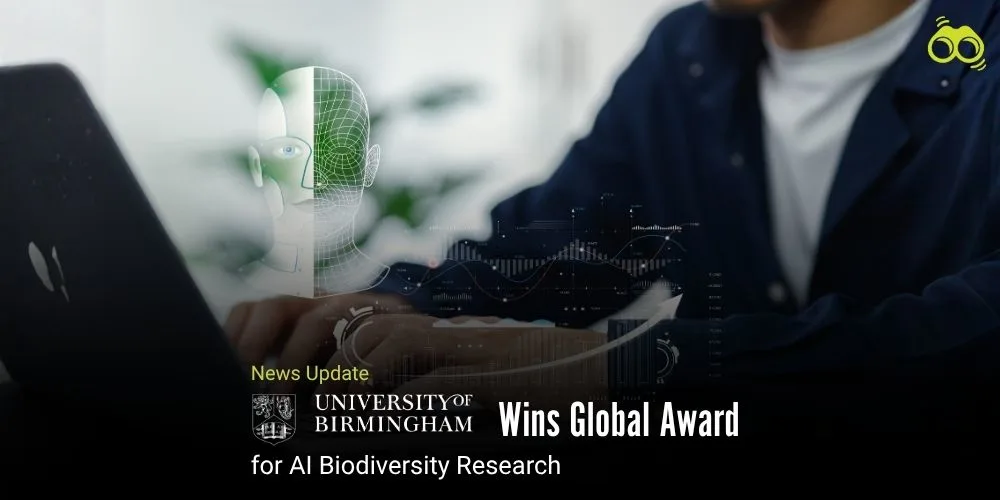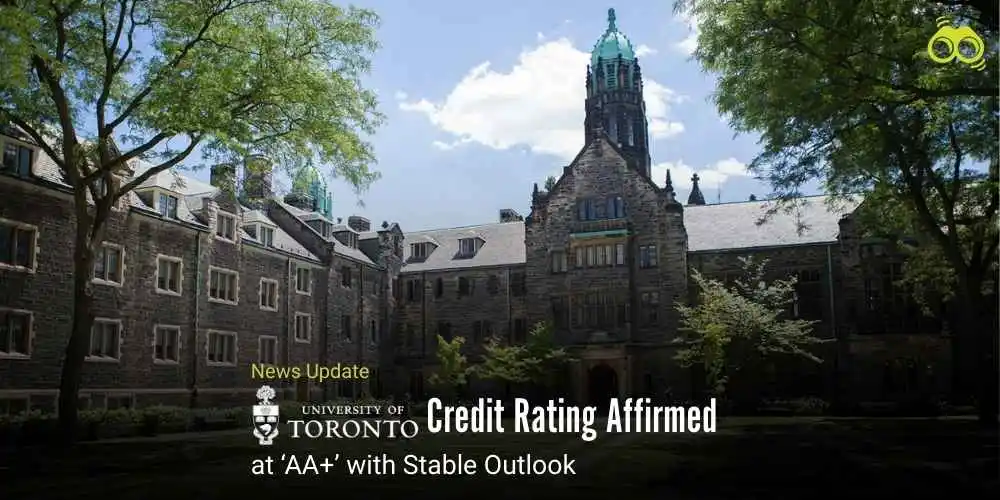AI and Supercomputing Drive Breakthroughs in Tackling Pollution and Species Decline
HPCwire Honours Birmingham’s AI Project Protecting UK Freshwater Biodiversity
Adoption of AI has become the order of the day in different industries, with reports indicating that by 2025, nearly 78% of enterprises across the globe will use AI in at least one business function, providing productivity improvements ranging from 26-55%, and an average return of $3.70 for every dollar spent. Biodiversity loss has alarmingly reached an extinction crisis; from 46,000-plus species threatened with extinction across the globe by 2024, ecosystem collapse is predicted as one of the top four risks for the next 10 years.
With this underbelly, the University of Birmingham is applying AI and HPC to analyse huge ecological datasets to discover how pollutants and climate extremes interact to drive biodiversity decline and show how ecological computational methods can inform conservation strategies and evidence-based environmental policy. The HPCwire Awards are one of the highest honours in the high-performance computing community, recognising innovative applications of advanced computing that bring real benefits in science and industry. Previous winners include top-notch global research institutions and technology companies.
Biodiversity loss is something AI-powered research from Birmingham somehow gently touches on. Pollution and climate extremes threaten vulnerable species, and the project entitled AI-driven insights into biodiversity decline mainly worked with enormous amounts of ecological and chemical data covering terabytes.
Research Achievements
Professor Luisa Orsini and Dr Jiarui Zhou from the University School of Biosciences have led this project. It was explained that the work depended on the University's BlueBEAR supercomputing cluster, with NVIDIA A100 GPUs, for the backing of large-scale environmental data analysis.
Notable features of the research include:
The research identified stressors through AI modelling, including pollutants, insecticides, and fungicides.
Environmental DNA (eDNA) studies carried out in Birmingham were used to monitor declines in species.
Conservation strategies were developed using machine learning to prioritise species that are most at risk.
A data‑driven conservation model was built for UK lakes, linking pollution directly with biodiversity loss.
Birmingham's environment-related research, described as "cutting-edge," heavily utilises advanced computing and AI to address practical, real-world challenges. According to Professor Orsini, this work relied entirely on the resources provided by the University's Advanced Research Computing facility.
Policy Impact and Wider Trends
The research is already informing UK government policy on the impact of PFAS pollutants on UK freshwater biodiversity, demonstrating how AI and HPC can inform evidence-based regulation. Reportedly, Birmingham scientists used AI and eDNA to correlate pollution with biodiversity loss, revealing complex interactions between pollutants and biodiversity. Such work reflects wider global trends in environmental AI modelling and conservation data analytics, with an increasing number of universities engaging in monitoring ecosystem health using multi-modal environmental data. It has been dubbed a "biodiversity time machine" because of its ability to reconstruct historic and contemporary ecological change.
Public Interest and Future Steps
The ceremony featured negotiations on how the AI-driven environmental research performed at Birmingham prioritises species for conservation, hence strengthening AI biodiversity conservation UK. The projects were noted as serving the public interest by protecting student rights, ensuring safe conduct, and offering authentic routes to global careers within the environmental sciences.
Looking ahead, the University of Birmingham plans to expand its West Midlands environmental AI project and actively encourage collaborations and investments in AI‑driven biodiversity research. The institution has outlined several potential avenues for engagement, including collaborating on AI projects in Birmingham, supporting ongoing biodiversity research, applying for a conservation data science PhD, and joining the University’s environmental DNA study. These initiatives are designed to strengthen Birmingham’s role in advancing ecological science, while creating opportunities for researchers, students, and partners to contribute to innovative conservation strategies informed by cutting‑edge technology.
Conclusion
Recognition at SC25 was much more than an academic victory. It came to represent AI technology as one that identifies the worst offenders in the lakes, while equally demonstrating universities using machine-learning approaches to predict biodiversity loss. The application of advanced computing to ecological science has exhibited how the University of Birmingham has an edge in granting benefits to its data-driven conservation strategy, moving into the realm of AI for the protection of the environment. That achievement is tied directly to the public interest, which says pollution as a driver of biodiversity decline can be solved with innovation, collaboration, and trust in science. This type of partnership will govern the future of AI in environmental sciences to ensure that advancements in higher education and research remain safe and just for all.
Editor’s Note:
HPCwire Research Awards salute the research at the University of Birmingham as much as they celebrate graduate academic excellence. They also showcase the application of artificial intelligence and high-performance computing to solve one of the biggest issues of the present day: loss of biodiversity. Thousands of species are under threat, and ecosystem collapse is listed among the top global risks-it could not be more urgent. Perhaps the most significant aspect of this project is the impact it will have on real life. Analysis of vast ecological databases has enabled Birmingham scientists to find how environmental pollutants, insecticides, and fungicides interact with extreme climate conditions to adversely affect sensitive species. The establishment of new conservation strategies, through environmental DNA and machine learning, complemented by evidence as to their direction in government policy and protection of UK freshwater biodiversity, is now in train. This matters for the future in that it shows how technology can be harnessed for the public good. While much has been made of AI in the context of business efficiencies, here it is used toward the protection of ecosystems with a concern for justice in decision-making about the environment. The lessons are obvious: innovation must be matched by responsibility, and data must be used for the protection of people as well as nature. Lastly, all organisations must continue to promote community as well as environmental protection while holding the fort of reputation and trustworthiness.
As per Skoobuzz, the achievement at the University of Birmingham demonstrates how science, technology, and policy deliver tangible solutions: a future of higher education and research that progresses in safety, fairness, and the public interest.
FAQs
1. Why was the University of Birmingham recognised at the HPCwire Awards?
The University of Birmingham received the HPCwire Editor’s Choice Award for Best Use of AI Methods for Augmenting HPC Applications at the SuperComputing 2025 conference in the USA. The award recognised their pioneering use of artificial intelligence (AI) and high‑performance computing (HPC) to address biodiversity loss and environmental pollution.
2. What is the reason behind this research focus?
Biodiversity loss has reached crisis levels, with more than 46,000 species threatened with extinction globally by 2024. Pollution and climate extremes are major drivers of this decline. Birmingham researchers sought to use AI modelling of environmental stressors and environmental DNA (eDNA) to uncover how pollutants, insecticides, and fungicides interact with ecosystems, ensuring that conservation procedures are evidence‑based and serve the public interest.
3. How did authorities and leaders respond to this achievement?
Professor Luisa Orsini and Dr Jiarui Zhou, who led the project, emphasised that the work was made possible through the University’s BlueBEAR supercomputing cluster and collaboration with the Advanced Research Computing facility. UK authorities have already used the findings to inform policy on PFAS pollutants, showing that AI‑powered biodiversity research can strengthen safety, fairness, and regulatory rights in environmental decision‑making.
4. What impact does this research have on people and communities?
The project provides practical benefits by linking pollution with biodiversity decline in UK lakes. It helps protect vulnerable species, supports conservation strategies via machine learning, and ensures that environmental procedures remain transparent. For communities, this means safer ecosystems, stronger rights to clean environments, and policies that serve the wider public interest.
5. What are the wider implications of this work?
This research reflects global trends in environmental AI modelling and conservation data analytics, where universities use multi‑modal environmental data to monitor ecosystem health. Birmingham’s project has been described as a “biodiversity time machine” because it can reconstruct ecological changes over time. It demonstrates how AI can be applied beyond industry to safeguard ecosystems and strengthen trust in science.














0 Comments (Please Login To Continue)